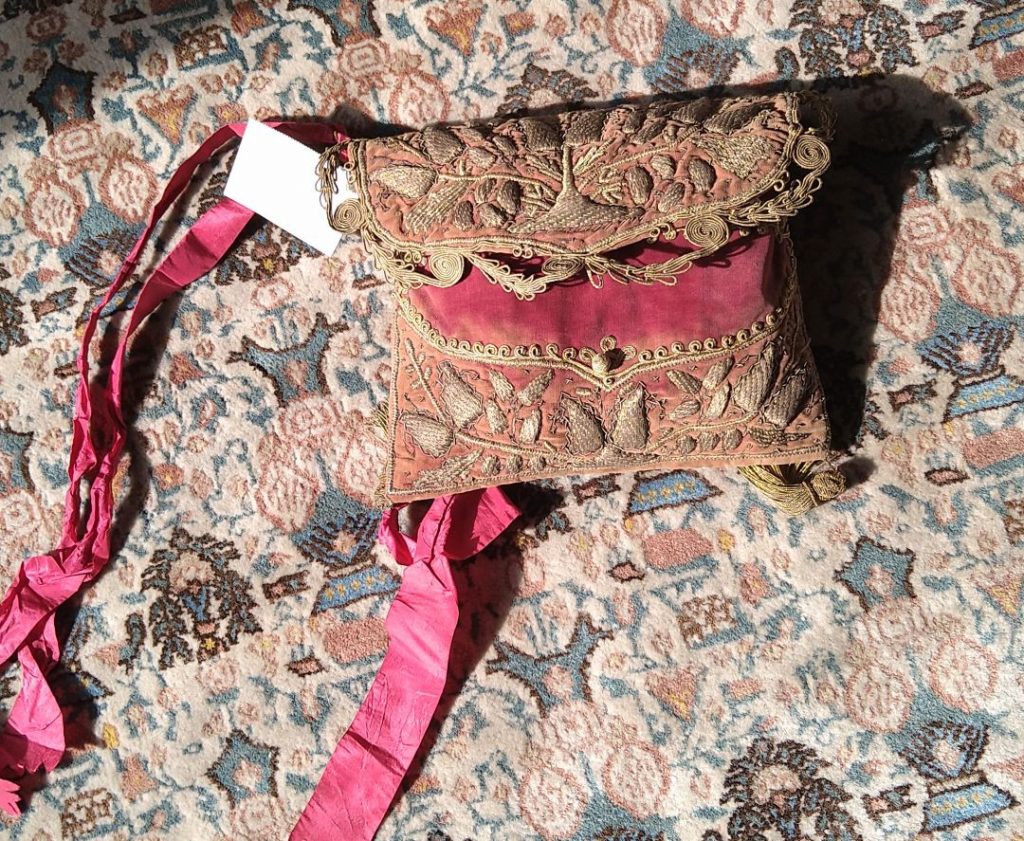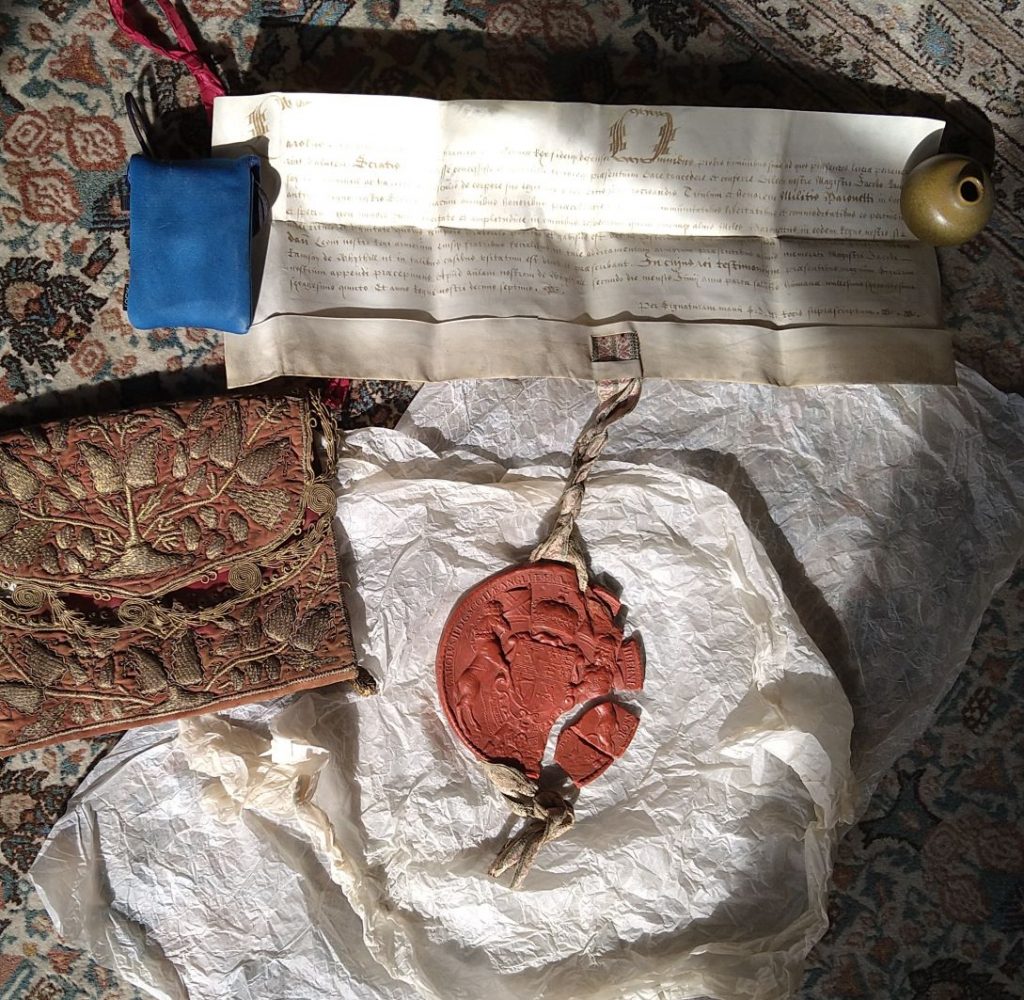Charter of baronetcy

This gorgeous velvet bag, densely embroidered with gold thread, has kept its precious contents safe for 400 years. As a family treasure and evidence of royal favour, it also adds substance to the Ramsays of Whitehill. The charter is validated by the royal seal to which it is still attached.

The Ramsay Baronetcy, of Whitehill in the County of Edinburgh, was created in the Baronetage of Nova Scotia on 2 June 1665 for James Ramsay. The honour had been devised by King James VI in 1624 as a means of settling the plantation of that province, the intention being to create 100 baronets, each of whom was to support six colonists for two years (or pay 2,000 merks in lieu thereof) and also to pay 1,000 merks to Sir William Alexander, to whom the province had been granted by charter in 1621.
James died before the scheme could be implemented, but his son Charles I created the first Scottish baronet on 28 May 1625, covenanting in the creation charter that the baronets of Scotland or of Nova Scotia should never exceed 150, that their heirs apparent should be knighted on coming of age (21), and that no one should receive the honour who had not fulfilled the conditions, viz, paid 3,000 merks towards the plantation of the colony. On 17 November 1629 the king granted to all Nova Scotia baronets the right to wear about their necks, suspended by an orange tawny ribbon, a badge bearing an azure saltire with a crowned escutcheon of the arms of Scotland and the motto Fax mentis honestae gloria (Glory is the torch that leads on the honourable mind).
Sir James was granted his Patent by King Charles II on 2nd June 1665. The debts incurred were considerable, and successive generations were still paying them off.
The Ramsay title became extinct on the death of the fifth Baronet in 1744